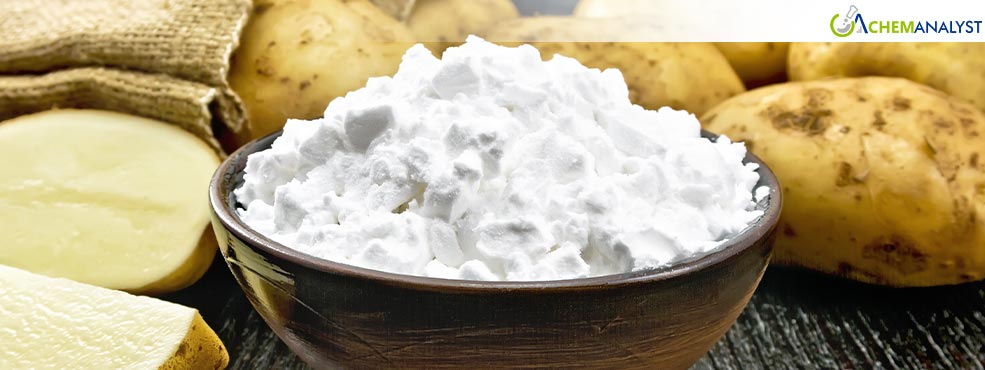Welcome To ChemAnalyst

The European potato starch price rose sharply throughout April 2025, echoing the upward trend of March. This is supported by a combination of strong buying activity of potato starch from processing sectors and constraints in available supply, in an environment of changing global pattern dynamics and economic instability in the region.
In April, demand picked up for potato starch across several industries. More particularly, end-use applications such as food processing, pharmaceuticals, and green manufacturing drove up ordering seasonally and due to increasing consumer demand for clean-label, plant-based products. potato starch, particularly from non-GMO potatoes not subjected to chemical pesticide treatment, is gaining favor since it is free from allergenic gluten, it can be biodegradable with packaging, and it is fit for use with green manufacturing applications.
As demand for potato starch increased more strongly, supply tightened up. Continuing logistics constraints, as well as reduced availability of stock across European suppliers, placed further upward pressure on Potato starch prices. Market participants reacted by real-time adjustment of pricing models, trying to reconcile competitiveness with the protection of margin in a dwindling market.
Additionally, shifting global trade policy created an added layer of complexity. Early in April, the United States put into place a broad tariff overhaul, with a blanket 10% import tariff on nearly all goods coming into the country. Country-specific tariffs were also applied, between 11% and 50%, with Chinese imports being hit especially hard with a 125% tariff. For products of the European Union, a 10% ad valorem duty was applied on April 5, while an increase to 20% became effective from April 9.
These commitments created heavy ripple effects across export markets in Europe. EU-origin potato starch purchasers in the United States, anticipating the impending duty increase, moved swiftly to make advance purchases before the effective date of the increased rate. This advance-buying further compressed inventories in Europe, confirming the pattern of price rise for the month. While the retaliatory tariffs against a few of its U.S. trading partners were put on hold for 90 days to allow for talks to occur, the initial shock of the tariffs themselves was sufficient to disrupt normal patterns of trade and create uncertainty among suppliers.
Meanwhile, the European economic environment provided conflicting signals. While overall business activity was still robust, sentiment in the Eurozone weakened as worries over trade repercussions and worsening manufacturing downturn mounted. Production levels were still robust, but signs are that many manufacturers and traders were still wary, reassessing procurement cycles and holding potato starch inventories more cautiously.
According to ChemAnalyst, potato starch prices will continue to rise in the short term due to sustained demand for downstream applications from food processing, pharmaceuticals, and green packaging. As long as global trade talks remain in disarray and risks for tariffs continue, market participants are forced to be alert and accommodated. Strategic purchasing, stock management, and advanced contracting will be important as the potato starch market will shift as trading systems change and as there is ongoing pressure on supply chains.
We use cookies to deliver the best possible experience on our website. To learn more, visit our Privacy Policy. By continuing to use this site or by closing this box, you consent to our use of cookies. More info.
